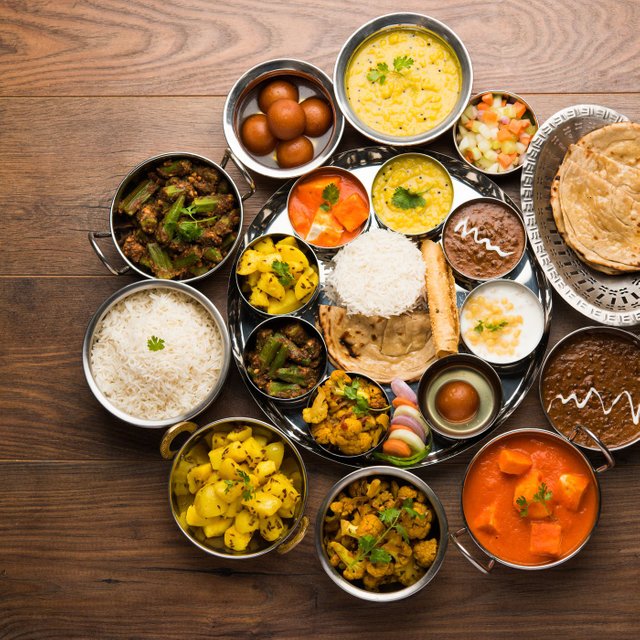Indian food

Indian food is renowned worldwide for its rich flavors, vibrant colors, and diverse range of ingredients. It reflects the country’s deep cultural heritage and its regional diversity. Indian cuisine is influenced by centuries of history, incorporating traditions, spices, and techniques from various regions, including Mughal, Persian, and Portuguese influences.
Key Features of Indian Cuisine:
- Spices and Aromatics: Spices form the backbone of Indian cooking. Common spices include cumin, turmeric, coriander, cardamom, mustard seeds, and chili. Garam masala, a blend of spices, is often used to enhance the flavor of dishes. Fresh herbs like cilantro and mint are also widely used.
- Regional Diversity:
North Indian Cuisine: Known for its rich and creamy dishes, such as butter chicken, paneer tikka, and naan bread. The use of dairy products like yogurt, cream, and ghee is prominent.
South Indian Cuisine: Features dishes like dosa, idli, and sambar, with a focus on rice, coconut, and tamarind. The cuisine is known for its spicy and tangy flavors.
East Indian Cuisine: Includes dishes like macher jhol (fish curry) and sweets such as rasgulla and sandesh, influenced by the abundant use of mustard oil and seafood.
West Indian Cuisine: Highlights include dhokla and the spicy curries of Rajasthan and Goa, where seafood and coconut milk are commonly used.
- Vegetarian Options: India has a strong tradition of vegetarianism, influenced by religions like Hinduism, Jainism, and Buddhism. Popular vegetarian dishes include aloo gobi (potatoes and cauliflower), chole (spiced chickpeas), and palak paneer (spinach and cottage cheese).
- Street Food: Indian street food is a culinary adventure, offering items like pani puri, samosas, pav bhaji, and vada pav. Each region boasts its unique street food culture.
- Staples:
Rice and Bread: Rice is a staple in the south and east, while bread like roti, paratha, and naan is more common in the north and west.
Legumes and Lentils: Dal (lentil stew) is a daily staple, often served with rice or bread.
- Sweets and Desserts: Indian desserts are a treat for the taste buds, ranging from gulab jamun and jalebi to kheer and laddu. Many desserts incorporate ingredients like milk, sugar, and nuts, often flavored with cardamom, saffron, and rose water.
- Beverages: Popular drinks include chai (spiced tea), lassi (yogurt-based drink), and filter coffee. Traditional drinks like thandai and masala chaas are also widely enjoyed.
Global Influence:
Indian food has made its mark globally, with Indian restaurants present in almost every major city worldwide. Its flavors and techniques have influenced other cuisines, leading to fusion dishes like chicken tikka masala in the UK.
Indian cuisine is more than just food; it is an experience of history, culture, and regional identity. Each dish tells a story, reflecting the diversity and richness of India.
You've got a free upvote from witness fuli.
Peace & Love!